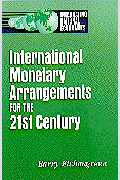Studies in this week’s Hutchins Roundup find that Medicaid enrollment improves participants’ financial health, unconventional and conventional monetary policies affect exchange rates in the same way, and more.
Want to receive the Hutchins Roundup as an email? Sign up here to get it in your inbox every Thursday.
Medicaid improves financial health
As part of the Affordable Care Act, Michigan expanded Medicaid eligibility in April 2014. Using data on demographics, use of health services, and credit reports of new Medicaid enrollees between April 2014 and March 2015, Sarah Miller of the University of Michigan and coauthors find that the Medicaid expansion improved the financial health of new enrollees. In particular, Medicaid enrollment led to fewer unpaid bills, fewer medical bills, less over-the-limit credit card spending, and fewer delinquencies, bankruptcies, and evictions. Medicaid enrollment also improved access to credit markets—new enrollees were 18 percent less likely to have credit scores below 500—and increased borrowing. The authors find that those with chronic illnesses gained the most from the Medicaid expansion, but even individuals without obvious health problems benefited.
Conventional and unconventional monetary policies have similar effects on exchange rates
Several studies have found that conventional, expansionary monetary policy—lowering the short-term nominal interest rate—typically leads to a depreciation in the exchange rate of the country implementing the policy. Using daily data on the entire term structure of interest rates to capture unconventional monetary policy shocks like forward guidance and quantitative easing, Atsushi Inoue of Vanderbilt University and Barbara Rossi of the Universitat Pompeu Fabra find that the effect of unconventional monetary policy on exchange rates is qualitatively similar to that of conventional monetary policy, suggesting that monetary policy did not lose its effectiveness in unconventional times. But the channels through which these effects occur are different: conventional monetary policy changes short-run expectations, while unconventional monetary policy mostly changes medium- and long-run expectations. The authors also find that exchange rates tend to overreact to conventional monetary policy; contractionary policy shocks generate a large initial appreciation followed by subsequent depreciations.
For-profit colleges leave students in more debt and worse off in the labor market than non-profit colleges
For-profit institutions make up a growing portion of the U.S. higher education market, and students at these colleges tend to have worse outcomes than their not-for-profit counterparts. But it is difficult to know whether the difference in outcomes reflects the poor quality and high price of for-profit education or whether it reflects the attributes of the students who enroll in those colleges. Luis Armona of Stanford University, Michael Lovenheim of Cornell University, and Rajashri Chakrabarti of the Federal Reserve Bank of New York use differences in the local supply of for-profit schools to differentiate between these two possibilities. They find that enrolling in for-profit colleges causes students to take on more debt and increases their likelihood of defaulting on student loans, both because their tuition costs are higher and because they are likely to have lower earnings. Six years after enrolling, students attending four-year for-profit colleges are 11 percent less likely to be employed and earn $6,000 less than their public college counterparts.
Chart of the week: Wealth inequality expanded during the recovery from the Great Recession

Quote of the week:
“It is difficult to communicate about a concept on which the central bank itself has little or poor information, such as the ‘terminal rate’, or the neutral level of the policy interest rate that is expected to prevail once all shocks have dissipated. It is a well-known fact that estimates of the natural rate of interest, commonly referred to as r*, are highly uncertain no matter which approach is used. […] Providing guidance on the future path, if warranted, might help overcome many of these risks. That is, rather than publishing a full numerical interest rate path, policymakers may continue to signal their inclinations by clarifying their reaction function, even in the period of instrument normalization,” says Benoît Cœuré, member of the Executive Board of the European Central Bank.
“Forward guidance linked to specific economic regimes – ‘Aesopian’ forward guidance as it has recently been dubbed – has also been found to be more effective. Empirical evidence suggests that the public tends to pay more attention to policy signals in unusual economic circumstances than during normal times. This is certainly our experience with forward guidance in the current uncertain environment but it also suggests that, in the future, given the complexity of chartering a multidimensional policy space, a further clarification of our reaction function might help market participants and the broader public to better anticipate the likely future path of short-term interest rates.”
The Brookings Institution is committed to quality, independence, and impact.
We are supported by a diverse array of funders. In line with our values and policies, each Brookings publication represents the sole views of its author(s).










Commentary
Hutchins Roundup: Medicaid’s effects on financial health, exchange rates and unconventional monetary policy, and more
September 20, 2018